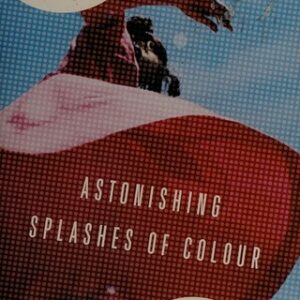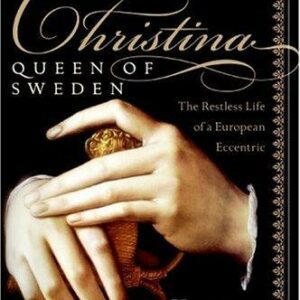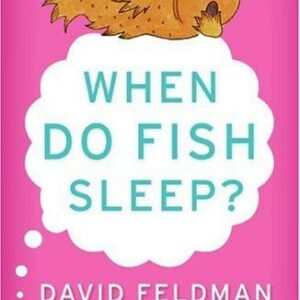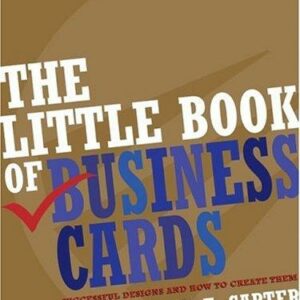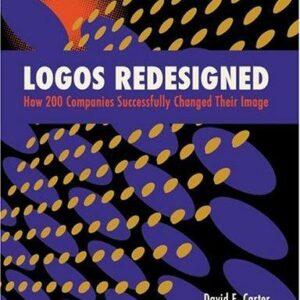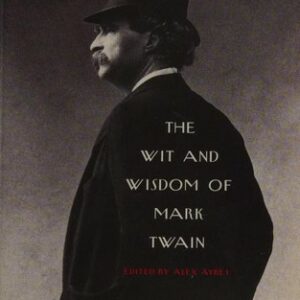A Friend of the Earth
$17.00
| Title | Range | Discount |
|---|---|---|
| Trade Discount | 5 + | 25% |
- Description
- Additional information
Description
One of LitHub’s “365 Books to Start Your Climate Change Library”
“Fiction about ecological disaster tends to be written in a tragic key. Boyle, by contrast, favors the darkly comic.” –Elizabeth Kolbert, author of The Sixth Extinction
Originally published in 2000, T. C. Boyle’s prescient novel about global warming and ecological collapse
It is the year 2025. Global warming is a reality. The biosphere has collapsed and most mammals—not to mention fish, birds, and frogs—are extinct. Tyrone Tierwater is eking out a bleak living in southern California, managing a pop star’s private menagerie that “only a mother could love”—scruffy hyenas, jackals, warthogs, and three down-at-the-mouth lions.
It wasn’t always like this for Ty. Once he was a passionate environmentalist, so committed to saving the earth that he became an eco-terrorist and, ultimately, a convicted felon. as a member of the radical group Earth Forever!, he unwittingly endangered both his daughter Sierra and his wife Andrea. Now, just when he’s trying to survive in a world torn by obdurate storms and winnowing drought, Andrea comes back into his life.
T. C. Boyle’s eighth novel blends idealism and satire in a story that addresses the ultimate questions of human love and the survival of the species.Praise for A Friend of The Earth:
“Funny and touching, antic and affecting . . . while Boyle’s humor is as black as ever, he demonstrates that satire can coexist with psychological realism, comedy with compassion.” —Michiko Kakutani, The New York Times
“As disaster tales go, this is a sly, hip one…Boyle has always liked to play circus barker for life’s extremes and what better freak show than the environmental apocalypse itself?” —The Washington Post
“Fiction about ecological disaster tends to be written in a tragic key. Boyle, by contrast, favors the darkly comic.” —Elizabeth Kolbert, author of The Sixth Extinction
“Both entertaining and informative…hits like a warning shot from twenty-five years into the future.” —Chicago Tribune
“A Friend of the Earth is about people and nature coming to terms with each other. In many ways it is a far more convincing argument for sustainable living in nature than any nonfiction environmental tract.” —San Francisco Chronicle
“Boyle gives us a vivid, grim, hilarious portrait of our world . . . he has a marvelous gift for translating large-scale environmental scenarios into immediate, palpable terms . . . What gives A Friend of the Earth‘s comically dismal future its bite is how profoundly it is embedded in the present . . . Boyle’s energetic prose achieves a fine balance between wacky comedy and serious reflection.” —The San Diego Union-Tribune
“Ripped from tomorrow’s headlines, the ecobiography of Tyrone Tierwater—failed monkeywrencher, ex-husband, ex-con, ex-zookeeper of the last Patagonian fox, and still-grieving father of the tree-dwelling Sierra, a twenty-first-century martyr to the redwoods.” —Outside
“The story careens along with the breathless authority of a roller coaster . . . In A Friend of the Earth, Boyle sets himself a new challenge, swinging a leg wide to plant a foot solidly on new ground. Part antic comedy, part ecological intelligencer, part heartfelt plaint, it is a comic novel on grievous themes, a serious exploration of tragic truths. It not only marks Boyle’s progress as a literary talent but demonstrates his consistent ability to entertain.” —Los Angeles Times
“Boyle is still one of the most inventive and exhilerating novelists around, showing how you can drive a narrative and still have fun with language.” —The Philadelphia Inquirer
“Boyle’s wonderful writing is simultaneously wild, talky, and charming. If A Friend of the Earth is a provoker of conscience, it is also—and foremost—rich entertainment.” —The Cleveland Plain Dealer
T.C. Boyle is an American novelist and short story writer. Since the late 1970s, he has published sixteen novels and ten collections of short stories. He won the PEN/Faulkner award in 1988 for his novel World’s End, and the Prix Médicis étranger for The Tortilla Curtain in 1995; his 2003 novel Drop City was a finalist for the National Book Award. His honors include the PEN/Malamud Award for Excellence in Short Fiction, the Henry David Thoreau Prize for excellence in nature writing, and the Rea Award for the Short Story. He is Distinguished Professor of English at the University of Southern California and lives in Santa Barbara.
INTRODUCTION
“I’m not going to preach. It’s too late for that, and besides which, preaching never did anybody any good anyway. Let me just say this, though, for the record—for the better part of my life I was a criminal. Just like you.”
—A Friend of the Earth
Flashing between the year 2025 and the 1990s, the novel is an account of the life of Tyrone O’Shaugnessy Tierwater, a middle-class single father who evolves into an environmental radical and ultimately sacrifices his own daughter to the Earth Movement.
The son of a successful real-estate developer who has plopped Levittown-style housing divisions and strip malls across America, Ty spends his early adulthood as the sort of man he comes to detest most—a modest suburbanite Überconsumer who daily commits unintentional outrages against the environment.
Ever since his wife died, he has been raising his pre-teen daughter, Sierra, a moody initiate in the Goth scene who largely ignores his presence. But Ty and Sierra’s lives change when he meets Andrea Cotton, the stunning spokeswoman for Earth Forever!, a media-savvy environmental-rights organization. Not long after, Ty, Andrea, Sierra, and Earth Forever! compatriot Teo Van Sparks, in an act of ecotage, plant themselves in concrete across a logging road to protest logging practices. Ty has soon earned his first set of criminal charges, but he is also declared an unfit parent and loses custody of Sierra. When he and Andrea sneak a visit to her foster home, Ty impulsively abducts his daughter, making the three of them fugitives and cementing his break with mainstream society. One Adam-and-Eve-like publicity stunt, several acts of vandalism, and a couple of prison stints later, Ty reluctantly passes the mantle of environmental activism to Sierra. Now an adult, Sierra has dedicated her life to a single colossal tree, in whose branches she spends the last three of years of her life.
Twenty-eight years later, Ty is hardly recognizable in the crusty old cynic who tends to the exotic and unlovable menagerie of ultra-rich pop star Maclovio Pulchris. He inhabits a world where everything Earth Forever! predicted has come to pass. The atmosphere’s protective layers have been stripped away and much of the Earth is bathed in heat and radiation, the variety of animal and plant life dwindles away, and humankind is besieged by a superflu while undergoing a slow cultural death. A misanthropic hermit, Ty has no need for humanity, preferring the company of the hyenas, giant Patagonian foxes, and sadsack lions that Pulchris sees as the world’s last chance to save some of its diversity.
And then Andrea comes back into his life. Asking Ty to help her with a biography of Sierra, she insinuates herself into his very home, making all that has come before the beginning of a period in which Ty has to reassess his life, ponder the Earth’s future and make one last attempt at love.
A scathing look at contemporary American society, from government and corporate malfeasance to the excesses of ordinary life, Boyle’s book also examines the societal and personal crimes that can turn a planet into a seething, dying rock and an ordinary man into a radical.
ABOUT T. C. BOYLE
A published writer for more than a quarter of a century, T. Coraghessan Boyle has written fourteen books of fiction. His stories have appeared in most major American magazines and his books have been translated into twenty-five languages. After graduating from Lakeland High School in Shrub Oak, N.Y., he studied history and English at State University of New York, Potsdam. A story in The North American Review earned him acceptance into the University of Iowa Writer’s Workshop in 1972, where he received his M.F.A. and Ph.D. in Nineteenth-Century British Literature. A professor of English at the University of Southern California since 1978, Boyle now lives near Santa Barbara with his wife and three children. His awards have included the PEN/Faulkner award for World’s End, the PEN/Malamud award for excellence in short fiction, several O. Henry awards, and the Prix Medicis étranger for The Tortilla Curtain in France, among many others. His novel The Road to Wellville was made into a movie by Alan Parker, starring Anthony Hopkins, Matthew Broderick, and Bridget Fonda.
A CONVERSATION WITH T. C. BOYLE
When you collected your stories, you categorized them in three sections: “Love,” “Death,” and “Everything in Between.” Which of these themes is strongest in A Friend of the Earth, and why did you focus on it?
I chose to categorize the stories in a rather whimsical way, in order to avoid presenting the usual sort of academic-looking volume of collected stories, arranged chronologically. Why? To emphasize that stories are not the province of the critic or academic, but rather of the audience, and that they are meant to be enjoyed, first and foremost, as stories, as acts of the imagination, as magic. As for A Friend of the Earth, I would have to assign it to all three of these invented categories: it is very much a love story, but one that deals with the death of many of the things that we, as a species, hold dear. Finally, of course, there is a whole lot that occurs in between these great demarcators of our lives—love and death, that is—and I hope I have given some of it dramatic form here.
How much did you draw on real-life events in the environmental movement, specifically Julia “Butterfly” Hill and her tree Luna? How much did you rely on groups such as ALF, ELF and the real Earth First! organization?
Julia Hill was an inspiration for me, though I should say that she climbed up into her tree some months after I began writing the book, and that I finished it before she came down. Sierra wound up staying in her tree—Artemis—longer than Julia embraced Luna, and, sadly, she came down less gracefully. Obviously, I was much influenced by the radical environmental groups, particularly Earth First! and the acts of ecotage they performed in the late eighties and early nineties, especially those surrounding the “Redwood Summer” campaign.
Why did you decide to switch between the first- and third-person narratives? What would the Ty Tierwater of 2025 and the Ty Tierwater of the 1990s have to say to each other?
The discovery I stumbled upon—that of switching between first- and third-person point-of-view while incorporating both in a single character—was a lucky accident. I began the book at Part I, in the third person, but then went back to write the Prologue in Ty’s own cranky, elderly, been-there-done-that voice. This, I think, gives a great deal more color to the third-person sections, in that the reader understands that they are being written by Ty, with all of his prejudices and attitudes intact.
Your work has long been notable for its use of animals as metaphor, plot devices, and characters. How does Friend, with its obvious emphasis on animality and humanness, fit into your development of the use of animals?
It amazes me to think that in our collective hubris, we presume to rule the animals of the earth, to use them for our own purposes, to choose to preserve one species over another, as for example, the glamorous, fang-baring Siberian tiger over the common garden slug. (Wonderfully adapted, incidentally, to ride a long trail of slime of its own making, in the way we might take a water chute in an amusement park—but slower, of course. Much slower.)
You go into great detail about Ty’s earliest actions, but when it comes to the apex, or nadir, of his career as an “ecoterrorist,” the poisoning, you leave much of the incident to the imagination. Why didn’t you dedicate more space to the incident that earned Ty the “Human Hyena” sobriquet?
In fact, I had written a chapter I later deleted from the final version. This version took Ty and Sandman to Lake Cachuma, at which point Ty decides that he is not the misanthrope and murderer the press might make him out to be and draws back from committing this terrible act. I deleted the chapter for two reasons: it slowed down the thrust of the two intertwining stories at their moment of union and it was, finally, de trop. I believe we can understand from what we have of Ty, as it stands, that he would not go to the extreme of mass murder. Of course, the very fact that he considers it raises the question of how far we might go in order to prevent the destruction of the environment and how anyone can take it on himself to play God. Think ethnic cleansing. Think Hitler and Radovan Kadzic.
Maclovio Pulchris is part Elvis, part Paul McCartney, and a lot Michael Jackson. Why did you choose a vapid pop star to act as what seems to be the world’s last best hope for avoiding complete ecological disaster?
Quite simply because these figures represent our modern gods, our pantheon, and they have taken it upon themselves to lead us to the Promised Land. In the case of Mr. Jackson, he does indeed have a menagerie of wild animals under his suzerainty. Does any human being have the right to possess the wild? And further, can any of us presume to choose what species are to be spared and what sacrificed? Do you remember Noah?
Your vision of the near future is bleak and you label your book “Fiction?” How much does Friend reflect your own prejudices and fears?
Regarding my own prejudices and fears: this book encapsulates them and writes them large. I worry about everything, from the extinction of the canyon wren (see The Tortilla Curtain) to the frying of the plankton like wontons due to the holes in the ozone layer to overpopulation and the slow starvation of one-third of the world’s population. I am depressed. I feel helpless. I’ve read our major environmental writers and none of them offers a breath of hope. What to do? Write a fiction and try to sort out my own feelings.
What are your own feelings about what is variously labeled “direct action” or “ecoterrorism,” depending on whether it’s an environmental group or a corporation doing the speaking? Did you consider delving into the issue of genetic modification as you wrote Friend?
Obviously I am very sympathetic to extreme acts against the destroyers of the environment. But at the same time I am not writing a polemic here—I am attempting to create a work of art that invites the reader in. I provoke the reader. Entertain him/her. Make them think more deeply on the issues involved, just as I attempted to do with regard to the issue of illegal immigration in The Tortilla Curtain. Consider this, however: while many of us may be sympathetic to subverting the law to protect the environment under the excuse that we are obeying a “higher law,” what of the right-to-lifers who make the very same argument in support of murdering the nurses, doctors, and patients and abortion clinics?
What other fictions did you consider when you wrote A Friend of the Earth, and how were they reflected in this work? You’ve said that Friend is the logical outgrowth of Tortilla Curtain. How did Friend pick up where Curtain left off, and what questions from Curtain did you decide to leave out in Friend?
I really had no other fictions in mind, but I do see the piece as being in the mode of Mark Twain or Jonathan Swift. As the European reviews have poured in, I see that many of them make reference to the George Orwell of 1984. I did not consider Orwell when writing A Friend of the Earth, but I suppose the comparisons are opposite in one way—we have both written of dystopias. Orwell’s very brilliant novel is politically oriented, however—it is a cautionary tale—and my book is not. As for the second part of the question: yes, I do see Friend as an outgrowth of Tortilla. While the latter novel dealt on the surface with illegal immigration in Southern California, the subtext—as many critics have noted—concerns a Darwinian struggle for existence among us and the other species of the earth, as well as an inter-species struggle as well. What good are borders or political entities in the face of a species—Homo sapiens or Canis latrans—deprived of resources?
Most of Friend takes place in the Pacific Northwest and California’s Sierra Nevada. What role does the setting play in the story, and how much of it is drawn from your life in Santa Barbara?
The setting, of course, was largely dictated by where the actual events of the environmental movement had taken place, as with the action in the Siskiyou, based on an Earth First! action. And, of course, as a Californian who indulges his love of nature by cruising the ancient Sequoia forests with birds perched on his shoulders (in the manner of St. Francis) these landscapes are very special to me. In fact, they are holy. People ask me what specifically I do to identify myself as an environmentalist, and I answer this: Quite simply, I walk in the woods. May you all have the opportunity to do the same.
DISCUSSION QUESTIONS
Prologue
Santa Ynez, November 2025
I’m out feeding the hyena her kibble and chicken backs and doing what I can to clean up after the latest storm, when the call comes through. It’s Andrea. Andrea Knowles Cotton Tierwater, my ex-wife, my wife of a thousand years ago, when I was young and vigorous and relentlessly virile, the woman who routinely chained herself to cranes and bulldozers and seven-hundred-thousand-dollar Feller Buncher machines back in the time when we thought it mattered, the woman who helped me raise my daughter, the woman who made me crazy. Jesus Christ. If somebody had to come, why couldn’t it be Teo. He’d be easier—him I could just kill. Bang-bang. And the Lily would have something more than chicken backs for dinner.
Anyway, there are trees down everywhere and the muck is tugging at my gum boots like a greedy sucking mouth, a mouth that’s going to pull me all the way down eventually, but not yet. I might be seventy-five years old and my shoulders might feel as if they’re attached at the joint with fishhooks, but the new kidney they grew me is still processing fluids just fine, thank you, and I can still outwork half the spoonfed cretins on this place. Besides, I have skills, special skills—I’m an animal man and there aren’t many of us left these days, and my boss, Maclovio Pulchris, appreciates that. And I’m not name-dropping here, not necessarily—just stating the facts. I manage the man’s private menagerie, the last surviving one in this part of the world, and it’s an important—scratch that, vital—reservoir for zoo-cloning and the distribution of what’s left of the major mammalian species. And you can say what you will about pop stars or the quality of his music or even the way he looks when he takes his hat and sunglasses off and you can see what a ridiculous little crushed nugget of a head he was born with, but I’ll say this—he’s a friend of the animals.
Of course, there isn’t going to be anything left of the place if the weather doesn’t let up. It’s not even the rainy season—or what we used to qualify as the rainy season, as if we knew anything about it in the first place—but the storms are stacked up over the Pacific like pool balls on a billiard table and not a pocket in sight. Two days ago the wind came up in the night, ripped the roof off of one of the back pens and slammed it like a giant Frisbee into the Lupine Hill condos across the way. Mac didn’t particularly care about that—nobody’s insured for weather anymore and any and all lawsuits are automatically thrown out of court, so don’t even ask—but what hurt was the fact that the Patagonian fox got loose, and that’s the last native-born individual known to be in existence on this worn-out planet, and we still haven’t found the thing. Not a clue. No tracks, no nothing. She just disappeared, as if the storm had picked her up like Dorothy and set her down in the place where the extinct carnivores of all the ages run riot through fields of hobbled game—or in the middle of a freeway, where to the average motorist she’d be nothing more than a dog on stilts. The pangolins, they’re gone too. And less than fifty of them out there in the world. It’s a crime, but what can you do—call up the search and rescue? We’ve all been hit hard. Floods, winds, thunder and lightning, even hail. There are plenty of people without roofs over their heads, and right here in Santa Barbara County, not just Los Andiegoles or San Jose Francisco.
So Lily, she’s giving me a long steady look out of the egg yolks of her eyes, and I’m lucky to have chicken backs what with the meat situation lately, when the pictaphone rings (think Dick Tracy, because the whole world’s a comic strip now). The sky is black—not gray, black—and it can’t be past three in the afternoon. Everything is still, and I smell it like a gathering cloud, death, the death of everything, hopeless and stinking and wasted, the pigment gone from the paint, the paint gone from the buildings, cars abandoned along the road, and then it starts raining again. I talk to my wrist (no picture, though—the picture button is set firmly and permanently in the off position—why would I want to show this wreck of a face to anybody?). “Yeah?” I shout, and the rain is heavier, wind-driven now, snapping in my face like a wet towel.
“Ty?”
The voice is cracked and blistered, like the dirt here when the storms move on to Nevada and Arizona and the sun comes back to pound us all with its unfiltered melanomic might, but I recognize it right away, twenty years notwithstanding. It’s a voice that does something physical to me, that jumps out of the circumambient air and seizes hold of me like a thing that lives off the blood of other things. “Andrea? Andrea Cotton?” Half a beat. “Jesus Christ, it’s you, isn’t it?”
Soft and seductive, the wind rising, Lily fixing me from behind the chicken wire as if I’m the main course: “No picture for me?”
“What do you want, Andrea?”
“I want to see you.”
“Sorry, nobody sees me.”
“I mean in person, face to face. Like before.”
Rain streams from my hat. One of the sorry inbred lions starts coughing its lungs out, a ratcheting, oddly mechanical sound that drifts across the weedlot and ricochets off the monolithic face of the condos. I’m trying to hold back a whole raft of feelings, but they keep bobbing and pitching to the surface, threatening to break loose and shoot the rapids once and for all. ”What for?”
“What do you think?”
“I don’t know—to run down my debit cards? Fuck with my head? Save the planet?”
Lily stretches, yawns, shows me the length of her yellow canines and the big crushing molars in back. She should be out on the veldt, cracking up giraffe bones, extracting marrow from the vertebrae, gnawing on hoofs. Except that there is no veldt, not anymore, and no giraffes either. Something unleashed in my brain shouts, IT’S ANDREA! And it is. Andrea’s voice coming back at me. “No, fool,” she says. ”For love.”
US
Additional information
| Weight | 10.2 oz |
|---|---|
| Dimensions | 0.7900 × 5.1000 × 7.7300 in |
| Imprint | |
| ISBN-13 | |
| Author | |
| Audience | |
| BISAC | |
| Subjects | edward abbey, literary fiction, FIC016000, thriller books, suspense books, dystopian fiction, funny gifts, dystopian novels, classic books, satire, biodiversity, tc boyle books, tc boyle, environmental books, climate fiction, books about climate change, aldo leopold, overpopulation, el nino, a friend of the earth, earth, classic, comedy, environment, environmentalism, suspense, FIC019000, book club books, dystopia, climate change, nature, global warming, john muir, capitalism, thrillers, funny books, speculative fiction, Thoreau, deforestation |
| Format |


